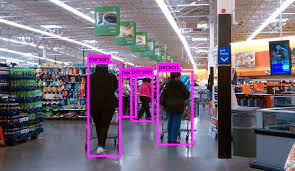How vision is shaping retail: A booster of consumers?
By Aditya Abeysinghe
 Retail is everything from simple grocery stores to shopping malls. The growth of transportation, production of items, and related stack of tasks has helped retail to expand exponentially in the recent past. Today, retail stores use technology for requirements from scanning goods to logistics. AI (Artificial Intelligence) is a new addition to technologies used in retail. Several advantages of using AI in shopping can be seen in the past few years by several retailers. In this article I will discuss about use of vision in retail with AI.
Retail is everything from simple grocery stores to shopping malls. The growth of transportation, production of items, and related stack of tasks has helped retail to expand exponentially in the recent past. Today, retail stores use technology for requirements from scanning goods to logistics. AI (Artificial Intelligence) is a new addition to technologies used in retail. Several advantages of using AI in shopping can be seen in the past few years by several retailers. In this article I will discuss about use of vision in retail with AI.
What is vision?
Computer vision includes methods used to identify, analyze, and predict an object from an image or any other graphic media. A popular use of vision is autonomous vehicles. Autonomous vehicles use sensors and cameras to detect objects and then apply the action for that identified instance. Another advantage is classification of objects from a set of objects. This is useful in areas like fraud identification and identifications required for self-serving robots.
The advantage of computer vision over that in humans and animals is the speed at which identifications, analysis and actions are made. AI algorithms used in computer vision applications may process thousands of objects in a limited time. It enables machines to identify defects and errors in goods which humans cannot even visualize. Also, data captured through vision in computers can be stored, analyzed, and be used to train other models. This has helped several popular models to be trained and tested on datasets in vision.
Vision uses ML (Machine Learning) algorithms and techniques to provide an output based on the media captured. Different types of techniques such as deep learning, CNN (Convolution Neural Network), and classification methods are used for vision. CNN is a type of neural network where an image is broken into smaller units and then identification is predicted using the inner neural network.

Current uses of vision in retail
A common use of vision in shopping malls is the use of facial recognition. Malls use cameras to detect how customers visit different sections and products they purchase. Then computer vision is used to identify types of goods customers look for and what they purchase. Once the types of objects are detected the mall could recommend them other products which they could purchase in the form of a mobile app feed. Some stores even allow payments for products which were suggested.
Another use is advertising of products based on what consumers purchase. Retail malls capture how customers buy products and what products they consider when buying. Then these retailers send discounts and other redeems which customers can use when buying products. In addition, retailers use captured information on buying behavior to promote goods using in-store or online advertising. These methods could promote items to consumers and save time when buying products rather than considering their differences.
Retailers could use vision to monitor shelves on the quantity of items available. This is faster compared to updating a POS (Point of Sales) of a mall when customers pay for items. Real-time notifications to managers on available products can enhance stock of items across the retailer. Vision-based stock of goods can also enhance efficient stock of items by viewing free slots in different sections.
Does it boost customers?
Vision uses cameras and other devices to capture customer buying trends in retail. Several critics have made concerns on how use of cameras to monitor customers can affect their secrecy in malls. Computer vision is a technique that captures data beyond usual monitoring by in-store surveillance devices. Therefore, it could identify who entered the mall, who they met, what they looked etc. Most customers are not willing to make a store capture so much data and then use it for retailer-based promotions and other marketing methods.
On the other hand, vision can help customers to quickly locate products in a mall and suggest products they are interested. It could also help customers to reduce the time of inspecting and comparing products. Some customers are even willing to use apps to enhance buying products by viewing items of malls online. Vision could provide techniques to enhance such tasks and boost the consumer pre-purchase behavior.
Image Courtesy: https://www.analyticsinsight.net







